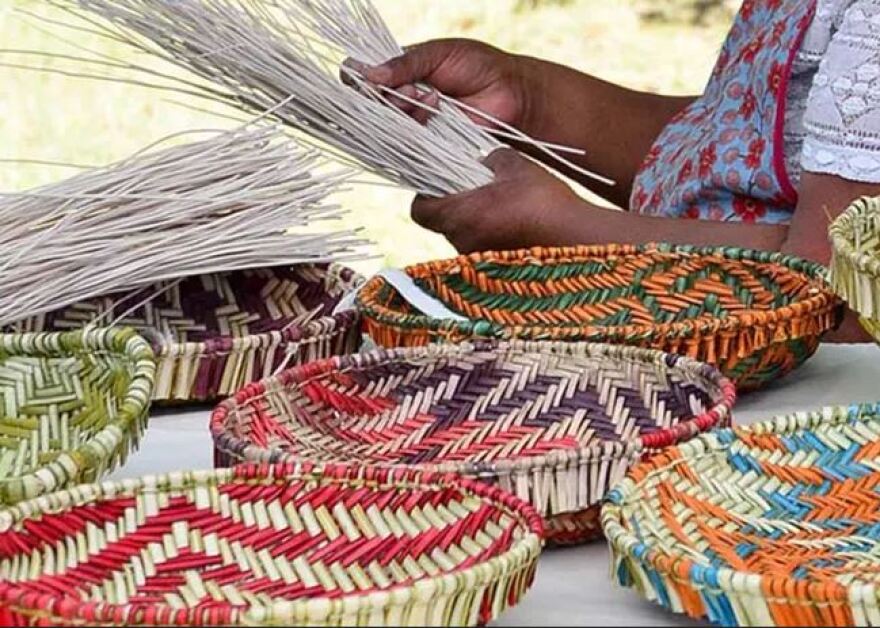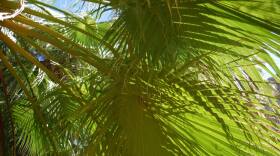For millennia tribal groups of the Southwest made baskets from local plants to use as specialized harvest tools. Skills are still passed down among basket weaving families to maintain the tradition. The baskets played a crucial role in gathering and processing food and other resources, and in celebratory events.
There are burden baskets, gleaning, parching, and seed beater baskets, water vessels, mortar, flour, and granary baskets, wedding, dance, and gambling tray baskets, and the list goes on. Burden baskets can be used for collecting firewood, wild harvested grass seeds, mesquite beans, and prickly pear foods.
In the Southwest, baskets are made from red berry sumac, various willow species, and narrowleaf yucca. Special care is given to promoting these plants. Stems of sumac and willow are pruned and burned to promote growth of long straight stems ideal for weaving. Some Tribal groups cultivated Devils claw to yield larger pieces used in decorative motifs and design elements.
Parching baskets are soaked with water or hardened with pine pitch so they can withstand the heat of burning coals, which are tossed in the basket alongside seeds to parch them. Mortar baskets are designed to be framed around a mortar rock to contain acorn and mesquite when processed into flour. Water vessel baskets are lacquered with pinon sap for waterproofing. Gambling baskets are used for holding game dice, wagered items, or hiding game pieces.
Even though today plastic and glassware pervade modern lives, to some tribal elders, nothing rivals the flavor of water drank from a woven water vessel where you can taste the elements of earth.
This Earth Note was written by Carrie Calisay Cannon and produced by KNAU and the Sustainable Communities Program at Northern Arizona University.








